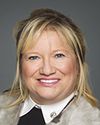Thank you for that question.
Mr. Chair, we undertook a number of different steps to ensure a full, exhaustive list of the contaminated sites.
First, we negotiated diligently with the Government of the Northwest Territories and the aboriginal parties with respect to the definition of what would constitute a waste site that Canada would retain. We looked at things like threats to public health and safety and the threats to the environment.
Once that common definition was determined, of what are waste sites and what are contaminated sites under the agreement, we then struck an intergovernmental working work group between the Government of Canada and the Government of the Northwest Territories and the aboriginal parties to go through the list of inventory. We applied the definition and the criteria that were agreed to in the devolution agreement with regard to the various sites that were in the Northwest Territories.
We came to a negotiated consensus between all parties as to what sites met those criteria. From there, we developed a schedule to the devolution agreement that itemizes exactly which sites are going to be excluded from transfer. That schedule can be found as part of the devolution agreement that was signed on June 25.
I can also tell you that through the implementation of the agreement at that time, we've had an intergovernmental working group that has continued to work on modifications to the schedule. There are provisions within the agreement that allow us to modify and amend the schedule as necessary, particularly around waste sites, because despite the fact that we signed the agreement on June 25, activity continues to happen up until transfer date.
We are now in the final stages of finalizing that site. We have consulted, we have sat down with all the parties, and we've come to a consensus. We are moving now through internal approvals to secure the necessary orders in council to ensure that those sites remain under the jurisdiction of the Government of Canada post-devolution.
Finally, the only other thing I would like to add, Mr. Chairman, is that there are provisions within the devolution agreement that allow for the Government of the Northwest Territories to come back, I guess, to the Government of Canada. We have dispute resolution. We do have mechanisms within the devolution agreement that allow us to go back and look at sites that we may have missed during those rounds. If, under the jurisdiction of the Government of the Northwest Territories, they find a site that we have missed in certain cases, then there is a process for us to sit down and go through that.





